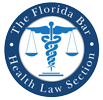Boise Hospital System Acquisition of Physician Group Successfully Challenged
The US District Court for the District of Idaho has ruled that a hospital system’s proposed acquisition of a multi-specialty group would increase the bargaining leverage for primary care physician services resulting in the potential to increase prices for those services. St. Luke’s Health System is based in Boise, Idaho. It includes a 400 bed hospital in Boise, and a 167 bed facility in Meridian. Meridian is approximately 13 miles east of Nampa, which is the home of Saltzer Medical Group, a 41 member multi-specialty group that includes 16 adult primary care physicians. Nampa is also the home of St. Alphonsus Health System and Treasure Valley Hospital. Those two facilities filed a motion for a preliminary injunction claiming that St. Luke’s acquisition of Saltzer would impact admissions to their facilities and ultimately reduce access to health care services in Nampa. Their motion was denied, but the Federal Trade Commission (FTC) and the Idaho Attorney General subsequently filed a complaint for permanent injunctive relief claiming that the combination of 7 primary care physicians already employed by St. Luke’s with Saltzer’s 16 primary care physicians would provide sufficient leverage to allow them to increase prices for their services, and would also increase costs of ancillary services by shifting them from office based to hospital based reimbursement levels.
This is the first litigated challenge by the FTC of a hospital’s acquisition of a physician group. The court noted that this was an extremely complex and difficult case. St. Luke’s argued that the acquisition would increase efficiencies and was consistent with the evolution of health care delivery systems. The court recognized those benefits, but determined that they were outweighed by the anti-competitive effects of the transaction.
Tremendous amounts of evidence and documentation were submitted to the court during the four week trial. Among them were business documents cited by the court as supporting its decision that the transaction was motivated at least in part by the opportunity to increase reimbursement rates. Those documents were not, however, the type of ‘smoking gun’ that might have been anticipated. They contained what could have otherwise been innocuous statements as to a healthcare system’s desire to increase its revenues. The court nonetheless found them to support the government’s position.
This transaction was not reportable to the FTC under the Hart-Scott Rodino Act, which obligates entities to notify the government of proposed acquisitions involving over $75.9 million. The government’s involvement demonstrates that they, and private plaintiffs, may pursue matters even though those thresholds are not met.
The court noted that even though patient outcomes might be improved through the transaction, the potential increase in bargaining power outweighed those benefits. The court further noted that the same benefits in healthcare delivery might be accomplished through affiliations and relationships that were short of a full merger. St. Luke’s intends to appeal the current ruling.
Reported by Chip Koval, Esq.
